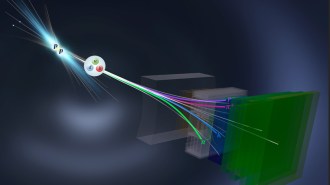Physicists have narrowed the mass range for hypothetical dark matter axions
If they exist, the subatomic particles could be the source of the universe’s elusive mass

The ADMX experiment (shown) has ruled out another swath of potential masses for particles known as axions that could make up dark matter.
Nick Du







